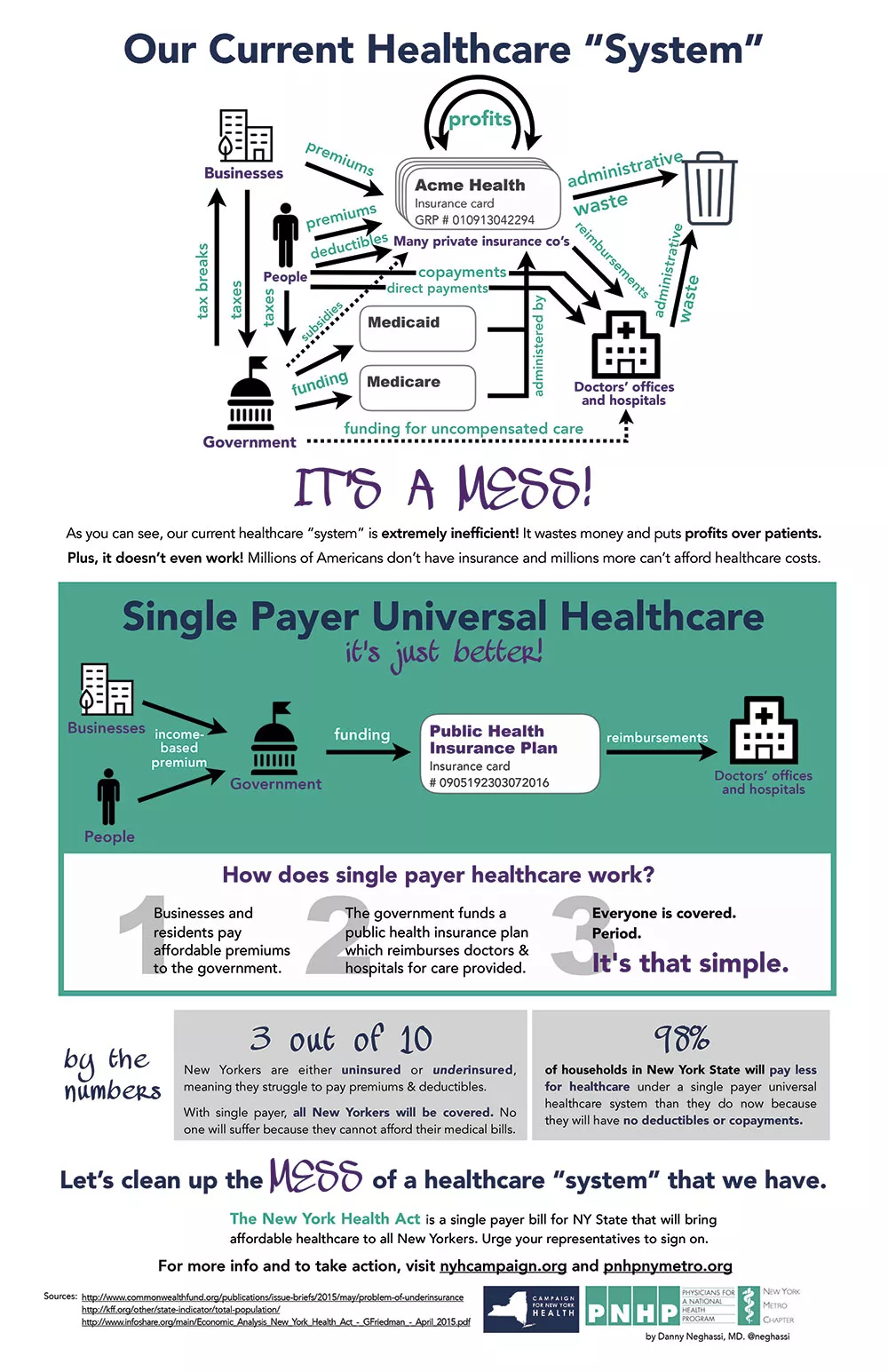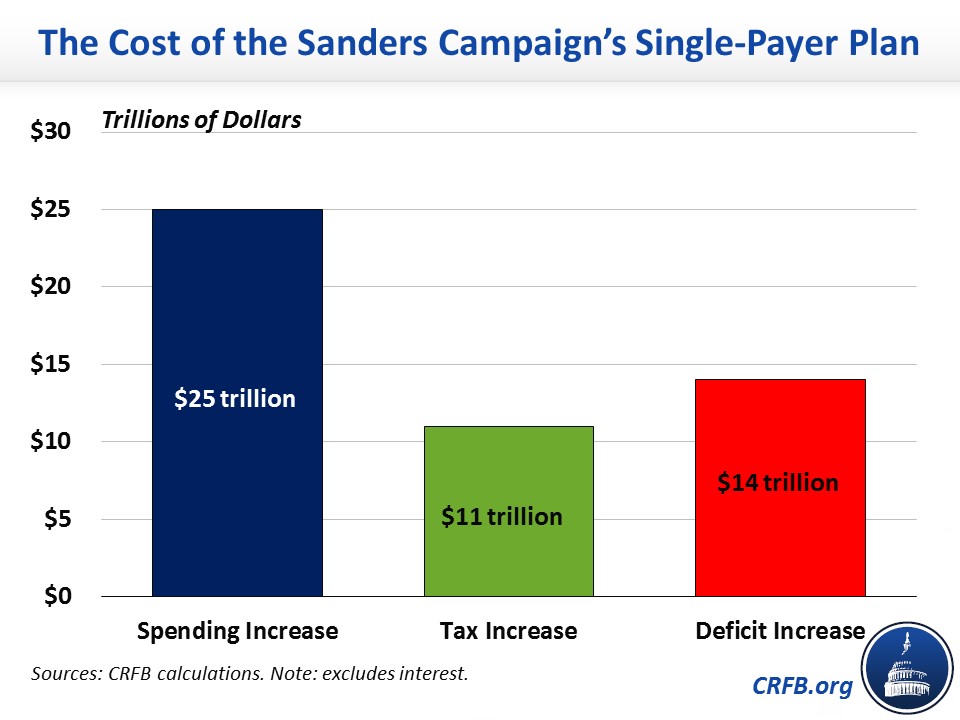The sickest 5% of the population produce 50% of total health care costs, while the healthiest 50% just produce 3% of costs. Individuals have less financial reward to stay healthy: Without a copay, individuals might overuse emergency situation spaces and medical professionals. There are long wait times for optional treatments: The government concentrates on supplying fundamental and emergency situation health care.
Healthcare expenses. For example, some Canadian provinces spend practically 40% of their spending plans on health care. with a low likelihood of success. This includes drugs for rare conditions and costly end-of-life care. In the United States, look after clients in the last 6 years of life makes up one-fourth of the Medicare budget.
Standardizes service. Produces a much healthier workforce. Avoids future social expenses. Guides people to make much healthier options. Drawbacks Healthy individuals pay for the sickest. Individuals have less monetary incentive to remain healthy. Long haul times. Medical professionals may cut care to lower expenses. Healthcare costs overwhelm federal government budgets. The federal government might restrict services that have a low possibility of success There are three universal health care designs.

Countries typically combine universal health coverage with other systems to present competition. These choices can lower costs, expand option, or improve care. People can also choose for much better services with additional personal insurance coverage. The United States offers various models for populations such as the elderly, veterans, and low-income people. In a single-payer system, the federal government provides free healthcare spent for with revenue from income taxes.
Every person has the very same access to care. This is called the Beveridge Model. When federal governments offer health care, they work to make sure physicians and hospitals provide quality care at a sensible cost. They must collect and analyze information. They can also utilize their purchasing power to affect health care service providers.
Fascination About How Much Is Health Care
Other nations include Spain, New Zealand, and Cuba. The United States uses it to veterans and military workers with the Department of Veterans Affairs and the armed forces. Nations that use a social health insurance model needs everybody to buy insurance coverage, usually through their companies. The taxes enter into a government-run medical insurance fund that covers everybody.

The government controls medical insurance rates. It likewise has a great deal of influence to control the private-providers' costs. Germany developed this system. France, Belgium, the Netherlands, Japan and Switzerland likewise utilize it. The U.S. Obamacare system also needs insurance, however there are numerous exemptions. It is likewise similar in that it supplies aids to health insurance business for low-income enrollees.
Every citizen pays into the national insurance plan. Administrative expenses are lower due to the fact that there is one insurance provider. The government has a lot of leverage to force medical costs down. Canada, Taiwan, and South Korea utilize this design. The U.S. Medicare, Medicaid, and TRICARE systems likewise utilize this model Australia has a mixed health plan.
Everybody receives coverage. People must pay deductibles prior to federal government payments kick in. Lots of citizens are prepared to pay for additional private medical insurance to get a greater quality of care. Federal government regulations secure senior citizens, the poor, children, and rural locals. In 2018, health care cost 9. 3% of Australia's gross domestic product.
The per capita cost was US$ 5,005, about average for industrialized nations. There were 42. 6% of patients who reported a wait time of more than 4 weeks to see a specialist. Australia had one of the finest infant mortality rates of the compared countries at 3. 1%. Canada has a nationwide health insurance coverage system.
9 Simple Techniques For How To Take Care Of Mental Health
Personal extra insurance coverage spends for vision, dental care, and prescription drugs. Medical facilities are openly moneyed. They provide free care to all citizens regardless of their ability to pay. The federal government keeps health centers on a set budget plan to control expenses, but compensates doctors at a fee-for-service rate. In 2018, health care expense 10.
The expense per individual was US$ 4,974. A tremendous 62. 8% of clients waited more than 4 weeks to see a professional. The baby death rate was 4. 3%, amongst the countries compared. France has a social health insurance system that supplies care to all legal locals. That includes hospitals, physicians, drugs, and some dental and vision care.
Of that, payroll taxes fund 64%, income taxes pay for 16%, and 12% is from tobacco and alcohol taxes. In 2018, healthcare cost 11. 2% of GDP. That was US$ 4,965 per person. Half of all clients reported a wait time of more than four weeks to see an expert.
4%. These data are all in the middle of the pack for developed nations - what is universal health care. Germany has a social health insurance program. Everybody should have public health insurance, however those above a specific income can choose private insurance rather. The state-sponsored insurance covers hospitalization, other than for meals and accommodation. It likewise covers rehabilitation for hospital stays, psychological health, and dependency.
Financing originates from payroll taxes. In 2018, healthcare expense 11. 2% Drug Rehab Center of GDP. It averaged US$ 5,986 per person. Both figures are about average. Just 28. 1% of patients reported a wait time of more than four weeks to see a specialist. That is amongst the most affordable of the industrialized countries.
The 25-Second Trick For Why Doesn't America Have Universal Health Care
The baby mortality rate was 3. 1%. The country has a social health insurance coverage system for all citizens. what is a single payer health care. Coverage is provided by competing private insurer. Homeowners pay premiums as much as 8% of their income. The federal government compensates them for any higher expenses. People can purchase extra insurance coverage to access better healthcare facilities, doctors, and facilities.
2% of GDP. It was USD $7,317 per person. Just 27. 3% of patients reported a wait time of more than four weeks to see a professional. The baby mortality rate was 3. 7%. The United Kingdom has single-payer healthcare that covers all residents. Visitors receive care for emergencies and infectious illness.
The government pays 80% of costs through income and payroll taxes. The rest is paid from copayments and individuals paying out-of-pocket for NHS services. It spends for all medical care, including some oral and eye care, hospice care, and some long-term care. There are some copays for drugs. In 2015, 10.
citizens had private insurance for elective medical treatments. In 2018, healthcare costs were 9. 8% of GDP. Drug Rehab Facility The expense was United States $4,069 per individual. However 46. 4% of clients reported a wait time of more than four weeks to see a specialist. The baby mortality rate was 3. 6%.
As a result, 67. 2% of Americans have personal medical insurance, primarily from their companies. The federal government funds personal health insurance coverage through Obamacare. Another 37. 7% of Americans have government coverage. These consist of Medicaid, Medicare, Children's Health Insurance coverage Program, and military protection consisting of the Veterans Administration. Only 8. 5% had no coverage at all.
The Basic Principles Of What Is Health Care
Numerous democratic candidates promote universal health care under the title "Medicare for All." In 2018, healthcare cost 16. 9% of GDP. That was an incredible US$ 10,586 per individual. About 28% of patients reported a wait time of more than 4 weeks to see an expert. That has to do with the like Germany and Switzerland.
